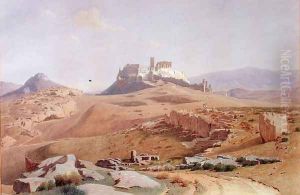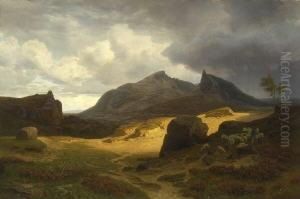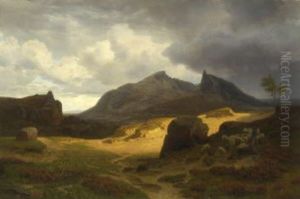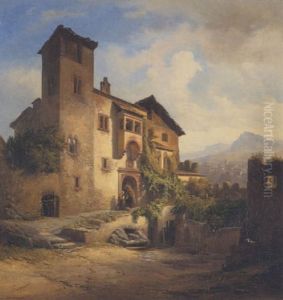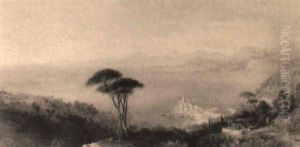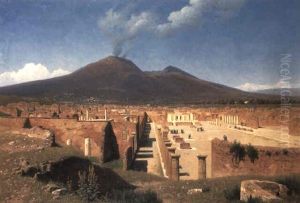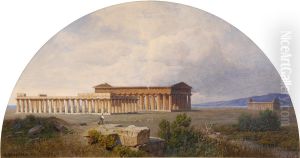Louis Spangenberg Paintings
Louis Spangenberg was a 19th-century German-American artist known for his landscape and marine paintings. Born on March 20, 1824, in Küstrin (now Kostrzyn nad Odrą, Poland), which at the time was in the Kingdom of Prussia, Spangenberg displayed an early talent for the arts. His initial education and exposure to art would have been influenced by the rich cultural history of the region and the broader European tradition of landscape painting.
Spangenberg pursued his artistic training at the Royal Academy of Arts in Berlin, which was one of the most important centers for artistic education in 19th-century Germany. The academy would have provided him with a rigorous training in the techniques of drawing, painting, and composition, as well as exposure to the works of the masters.
In the mid-19th century, Spangenberg decided to immigrate to the United States, as did many Europeans, seeking new opportunities and perhaps inspired by the prospect of the vast and varied American landscape. He settled in New York, which had become a burgeoning hub for artists, writers, and intellectuals. Here, Spangenberg would have been part of a vibrant and growing art community, with access to patrons, galleries, and the American art market.
During his career in the United States, Spangenberg became known for his skillful depiction of the American landscape and coastal scenes. His works often reflect a serene and pastoral quality, with meticulous attention to detail and a harmonious color palette. He painted a variety of subjects, including scenes of the Hudson River Valley, which was a popular subject among artists of the time, as well as marine scenes that capture the dynamic energy of the sea.
Spangenberg's paintings were exhibited at various institutions, including the National Academy of Design in New York City, which was an important venue for American artists to showcase their work. His contribution to American art was part of a larger movement of landscape painting that celebrated the natural beauty of the country and contributed to a growing sense of national identity.
Louis Spangenberg's career was cut short when he passed away on November 3, 1893, in Jersey City, New Jersey. Despite his relatively brief career, his works continue to be appreciated for their contribution to the genre of landscape painting in America. Spangenberg's paintings can be found in various collections, and he is remembered as an artist who bridged European tradition with the burgeoning American art scene of the 19th century.
